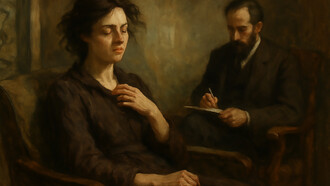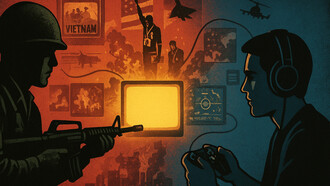Spirituality, especially the religious kind, has been on the path to deformity and obscurity. The sacred, once an essential element of human existence, is increasingly veiled. A long stream of thought, history, and economics has structured society in a way that makes true religious experience very difficult, if not entirely impossible. And continuous distractions, together with the absolute dominance of capitalism, have created social and economic systems so ill-equipped to enable a deeply spiritual life.
However, this does not mean that the mundaneness of our existence should take over or that we, in the words of Milan Kundera, cannot deal with the “unbearable lightness of being." As Oscar Wilde said, “We are all in the gutter, but some of us are looking at the stars.”
This looking at the stars, the ability to seek beauty or truth even in our postmodern world, can be the very thing that saves us. Surely, we live in a fragmented world with most grand narratives deconstructed one by one. But this does not take away our yearning for something bigger than ourselves, which gives us proper meaning.
This reminds me of T.S. Eliot's “The Waste Land," where he draws a bleak picture of our modern condition and the fragmented world. Still, he uses references to epics, classic literature, and other works of art as a high anchor from which we can get a coherent sense of this otherwise fragmented world.
Quite similarly, Fyodor Dostoevsky also explores such a struggle in his book “The Brothers Karamazov.” The novel takes a deep look into the conflict between faith and doubt, the sacred and the profane, showing how deeply intertwined these elements are in the human experience. Few works of literature explore the difficulty of maintaining religious faith in an increasingly secular world the way Dostoevsky's work does.
In each of those examples, the individual must refer to himself as the source of meaning, rather than seeking it from an external source. The internal creativity and passion of the human are what drive such an individual forward.
Yet, creativity and passion are qualities that remind us of the attributes of God, which also happen to be the very basis of art. If we cannot find meaning in religion, perhaps we can still take some of its core principles and see what we can do with them. This approach is quite interesting as it represents a completely bottom-to-top method, using one's self to reach a higher way of life and better meaning, instead of the typical religious approach, which is top-to-bottom, rooted in faith and becoming by following a prophet or rituals. In the creative, or "artistic," way of living, rules, morals, and meaning have to be created by one's self. It is the ultimate existentialist pursuit.
This is precisely what Goethe illustrates in his masterpiece “Faust,” where the doctor of theology, Faust himself, becomes fed up with his erudition and ventures into a dangerous adventure, hoping to find something that allows him to cherish the moment. He is no longer satisfied by either his religious studies or his worldly meat and drink. Instead, he chooses a life of activity and adventure, which, despite all its pitfalls and dangers, gives him a better perspective on reality.
Nietzsche too, embraced this idea. In his view, art can replace the gap left by religion. The Übermensch, which is Nietzsche’s term for the superior kind of human being, is a man of self-creation, self-discipline, and high creativity. The creation of one's values and the expression of one's individuality is a path to transcendence. It allows you to let go of a mundane existence and connect with something bigger than yourself.
Art and creativity, in this context, become a form of secular spirituality then. They provide a way to explore the depths of human experience, to grapple with the profound questions of existence, and to find beauty and meaning in the world. While religion offers a framework for understanding our place in the universe, art invites us to create our own framework, to engage with the world in a deeply personal and transformative way.
The struggle to find meaning in a secular world is not a new one. Throughout history, individuals have turned to art as a means of exploring the spiritual dimensions of life. From the cave paintings of our ancestors to the masterpieces of the Renaissance, art has always been a way to connect with something greater than ourselves. In the postmodern world, where traditional religious beliefs may no longer resonate, art offers a way to fill the void, seek out the sacred in the everyday, and find a sense of purpose and meaning in our lives.















